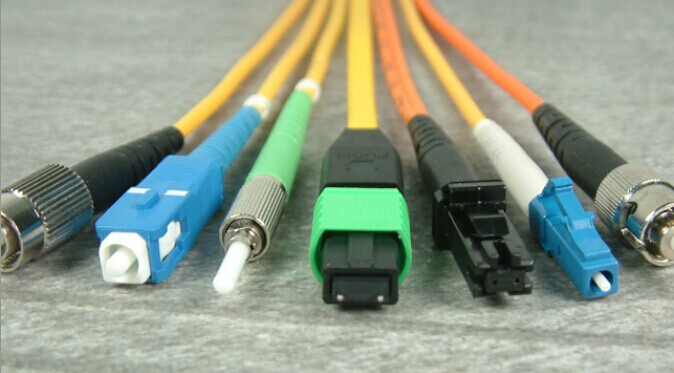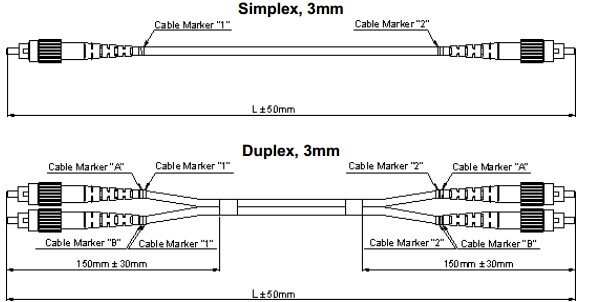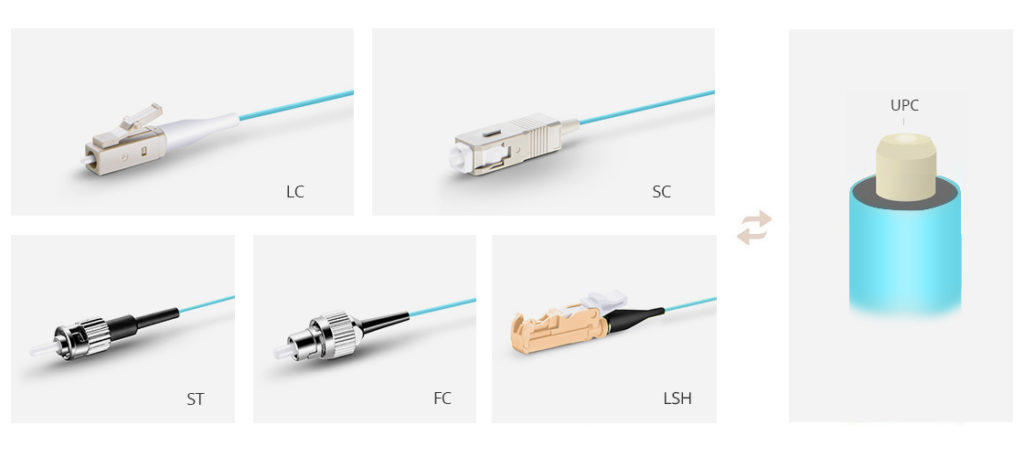Fiber optic patch cable, a quite simple but necessary fiber optic products in our optical network, all people who works in the fiber optical industry almost have some knowledge about it. It mainly includes a fiber optic cable and a connector on its end parts, and this kind of fiber optic cable is used to communicate with different optical devices or other electronic devices for transmitting the signal, since these points, we can believe that has different types, different connectors, different lengths, different applications and so on. However, these differences can help me choose what we need and today this page will explain fiber patch cables from different aspects and hope this page give you some helps.
Firstly, we must have it in mind is fiber optic connector, as you know, at its end parts we can see that many different connectors, the commonly used connectors are ST, SC, LC, MT-RJ, FC, MU, SMA, ESCON, FDDI and etc…, well, the two sides all can be different, it just means such as LC to ST fiber patch cable, FC to sc fiber patch cable and others. Fiber application for fiber optic connectors can be singlemode and multimode patch cable, we usually see it and it sometimes abbreviation as SM and MM patch cable. Of course, they can have different options, for example, singlemode LC to ST fiber patch cable or multimode FC to SC fiber patch cable… The Figure show four common types of fiber connectors.
As for the the differences between singlemode and multimode fiber optic cables, singlemode is an optical fiber cable with a small core (eg 2-9 microns) that supports one mode and multimode is an optical fiber with a core (25-200 microns) that supports several mode and the core size is also different, commonly SM is 8.3/125 and multimode is 62.5/125, except this, singlemode used to high speed, long distance links and multimode used for lower speed and short distance links. Then another category is usually forgotten, the mode conditioning fiber cables, it is specific to gigabit ethernet applications, all these cables are not interchangeable. By the way,there are some types we have to mention it, it is simplex and duplex cable, simplex cable has a single fiber and duplex cable has two fibers and they usually in zipcord (side by side) style, simplex 3mm and duplex 3mm are shown as the Figure.
Secondly, the jacket types are we also nend to know, available jacket types are PVC riser, ofnp plenum, indoor and outdoor riser, indoor and outdoor plenum, aerial and direct burial, waterproof fiber optic patch cords, ribbon fiber optic cables and bunched fiber optic cables. In Fiberstore, PVC/lszh patch cables category are OM1, OM2, OM3 cables and OM4 fiber cables, and the OM3 and OM4 provide data transfer speeds of 10G in 10Gbe high bandwidth applications via OM4 fiber, it is faster than equal μm OM2 fiber, and the OM1 and OM2 fiber cables in Fiberstore all multimode fiber cables.
Finally, the pulling eye option is also important, it is the end of the cable to prevent damage during installation. During the fiber optic installation, the force is redirected to the body of the cable instead of the core or connectors, this reduces the stress and damage to the fibers, it maybe removed and reused. They are used in telecommunication network, active device termination, CATV networks and local area networks.
Well, when we know some knowledge of fiber patch cables, and the next step we need to know where to buy it, there is a quite good site for you, Fiberstore will be you good choice, it has professional solution to provide for you and high quality fiber cables to supply, include fiber optic cables and even fiber optic pigtails, more to say, Fiberstore is doing big sales for the festal arrival, if there are some needs, welcome to have a try.




